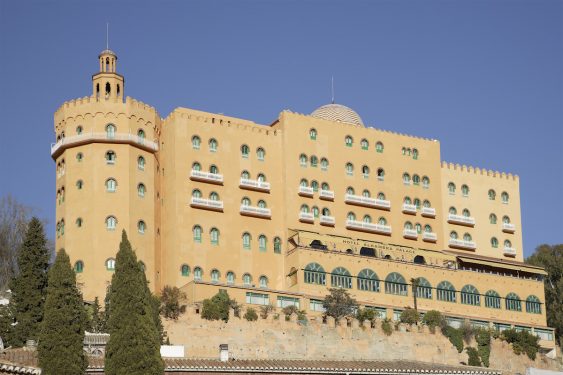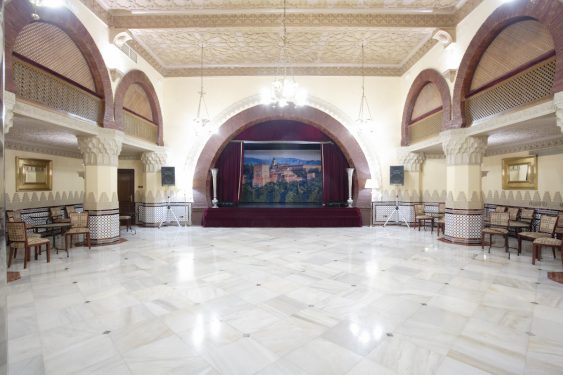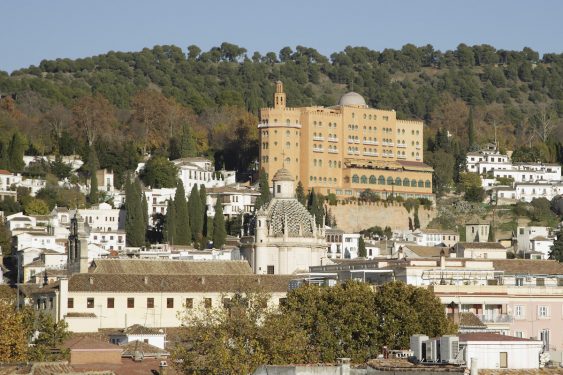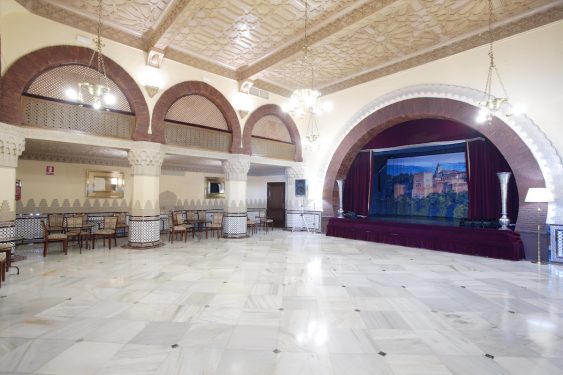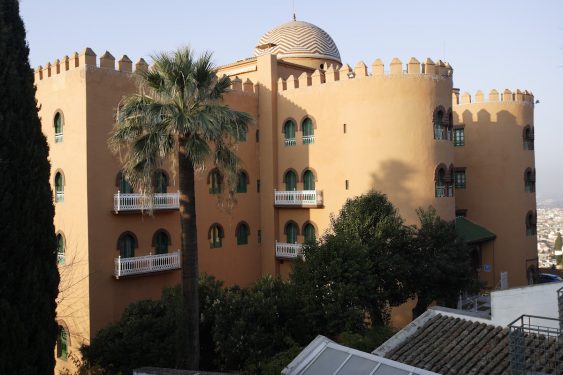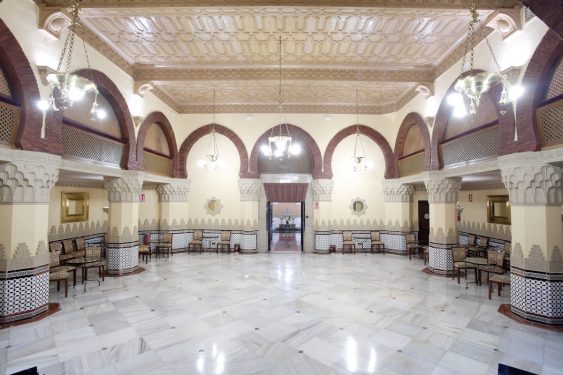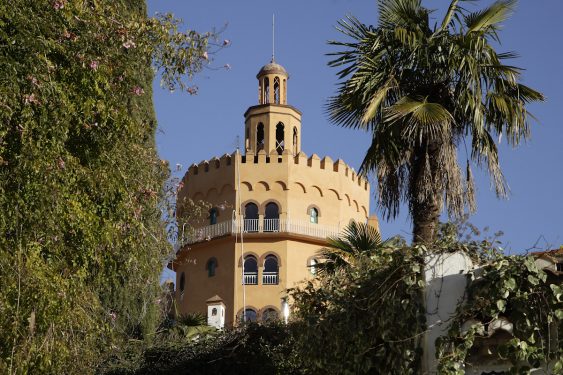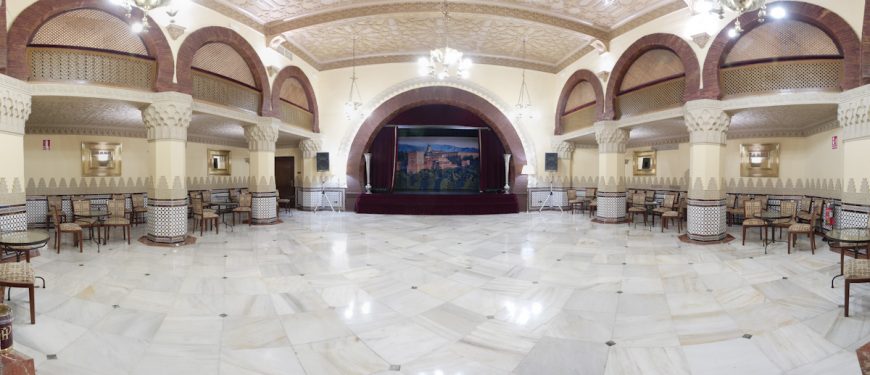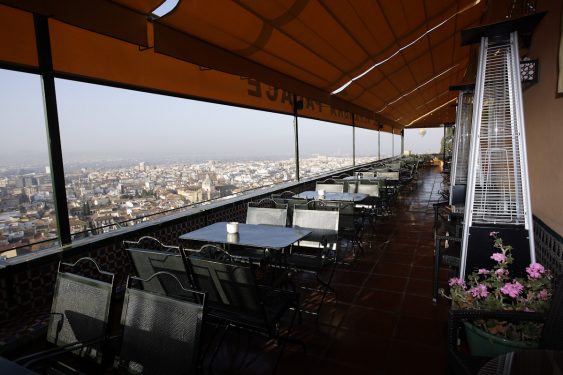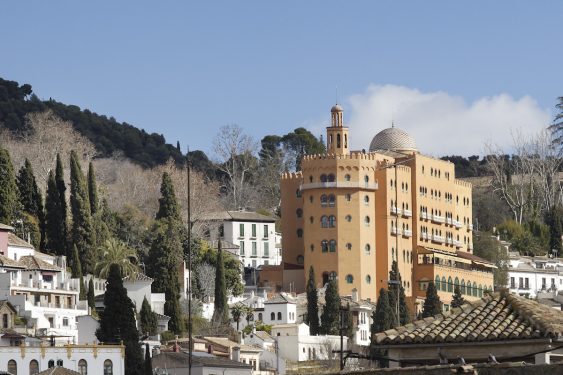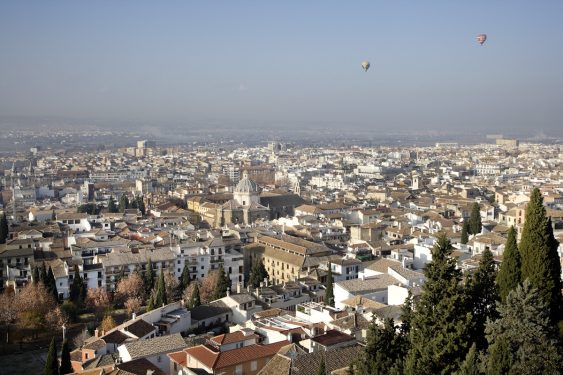The theater of the Alhambra Palace Hotel hosted the previous recitals of the 1922 Song Contest and and the tribute to Xirgu for her role in Mariana Pineda play in 1929.
The most emblematic hotel in Granada, promoted by the Duke of San Pedro de Galatino in the heart of the Alhambra in Granada and inaugurated on December 31, 1909, in the presence of King Alfonso XIII, is closely linked to the history of music in general, flamenco in particular, and Lorca’s imaginary.
The establishment, a true architectural daring that has ended up blending in with the landscape, crowns the hill and is located less than 200 meters from the House-Museum of Manuel de Falla, in the Antequeruela. The hotel became the reception center for artists coming to Granada. Lorca recited poems in the coquettish neo-Arabic salon on several occasions, almost always compositions related to the world of flamenco.
In the days leading up to the 1922 Cante Jondo Contest, held on June 13 and 14, the hotel’s small theater, designed as a complement for visitors and in the same neo-Arabic style as the building, hosted an artistic evening in which the most emblematic figures of Granada’s culture of the time took part, among them Federico García Lorca.
On June 7, the event was opened by Antonio Gallego Burín, a regular member of El Rinconcillo and then vice-president of the Centro Artístico, who read part of a booklet on flamenco singing published by the Urania printing house. This was followed by guitarist Manuel Jofré, who gave a short recital consisting of a seguiriya. García Lorca recited several compositions from the Poem of the Deep Song, specifically the Poem of the Gypsy Siguiriya , Death of La Petenera and the Poem of Solitude.
Lorca, according to the chronicle of El Defensor, “read passionately” and unveiled The Ballad of the Three Rivers and his Deep Vignettes. The event was closed by Andrés Segovia.
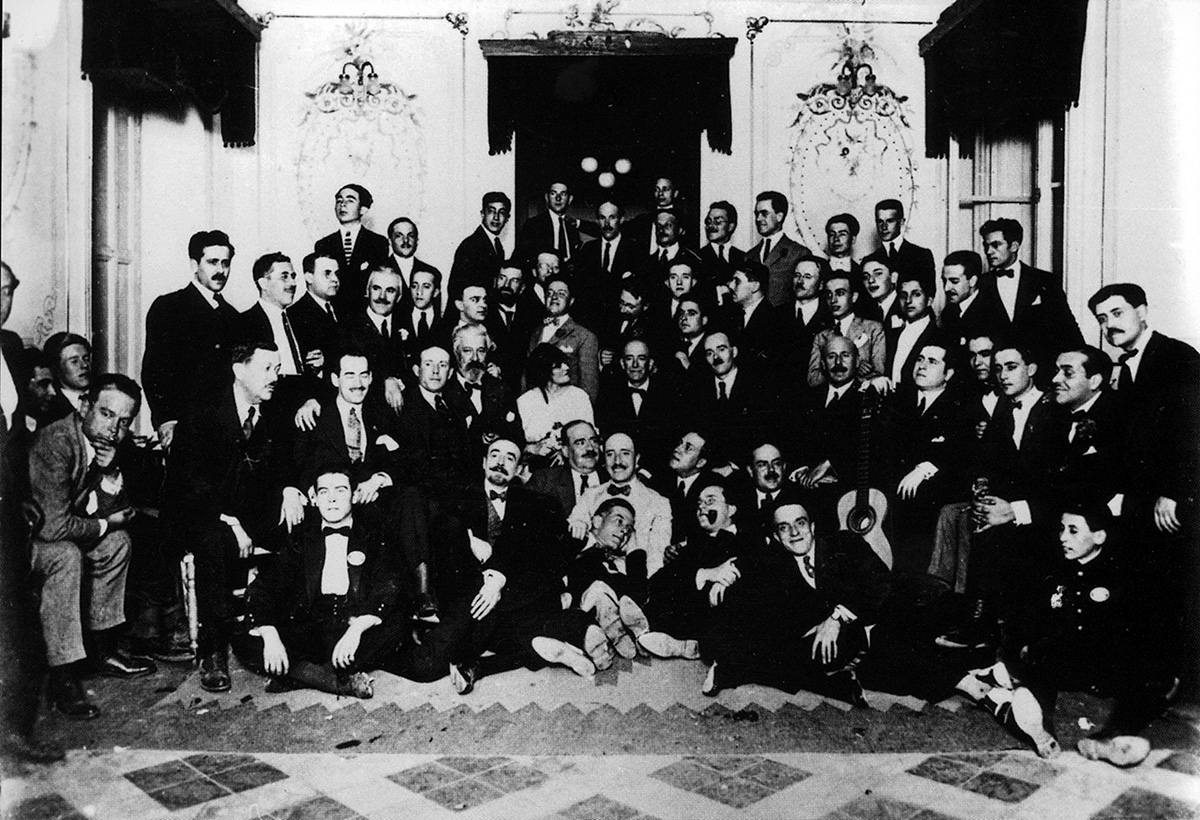
The theater was closely related to the preparations and activities prior to the Flamenco Song Contest. Andrés Segovia, who arrived in Granada on May 16, gave two concerts there at the request of the Perfoming Arts Center. In the second, the concert performer interpreted Le tombeau de Debussy for guitar composed by Falla. It was so successful that the concert had to be repeated. Wanda Landowska, the famous harpsichordist, a friend of Falla’s, performed two concerts, on November 23 and 25, 1922, at the Hotel Alhambra Palace, organized by the Philharmonic Society.
García Lorca returned to the Alhambra Palace Hotel seven years later, on May 5, 1929, accompanied by a large group of friends, including his father, Don Federico García Rodríguez, to share a banquet in tribute to Margarita Xirgú for the Granada premiere of Mariana Pineda.
The play was devised and written many years earlier, specifically between 1923 and 1925. It premiered at the Goya theater in Barcelona on June 24, 1927. The tribute in Granada, two years after the premiere, was offered by Constantino Ruiz Carnero, director of El Defensor newspaper, who said, “García Lorca, renovator of Spanish lyric poetry, was discovered by the people of Granada themselves and we have said to Madrid and the rest of Spain: ‘There you have a poet who was born in Granada and who has all the magnificence of this prodigious Andalusian land”.
Shortly afterwards, on May 18, 1929, Lorca offered on the same stage of the Alhambra Palace theater a recital of poems with a selection from Book of Poems, Songs and Gypsy Ballads.
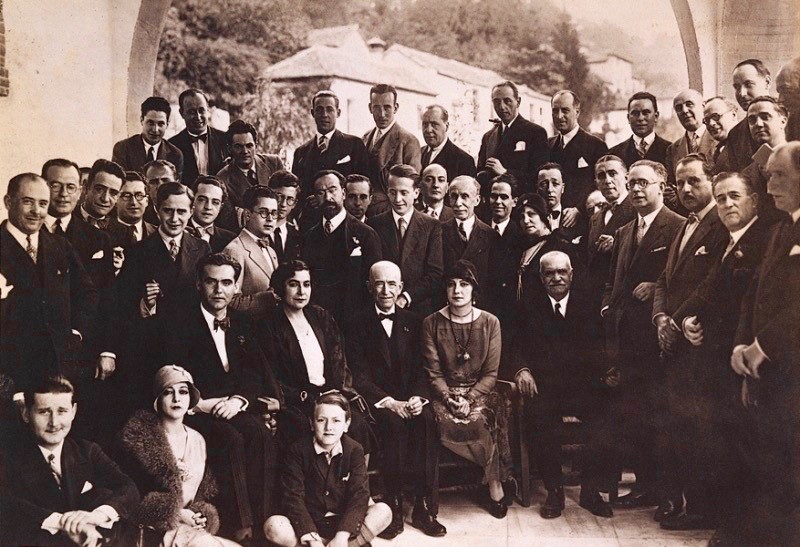
The family photo at the Alhambra Palace after the premiere of Mariana Pineda, on May 5, 1929, is an extraordinary document on the components of the cultural Granada linked to Lorca before the outbreak of war. In addition to the author, Margarita Xirgu and Manuel de Falla, Fernando de los Ríos, Antonio García Valdecasas, Julia Pacello and Federico García Rodríguez appear.
Also in the photo are Falla’s secretary, Enrique Gómez Arboleya, José María Bérriz (the first person to communicate Federico’s assassination in writing to the Rodríguez-Acosta family), Manuel Fernández-Montesinos, the socialist mayor assassinated in the first days after the uprising of July 1936, the filmmaker José Val del Omar, Antonio Gallego Burín and Hermenegildo Lanz.
Perhaps because of the time elapsed between the writing and the premiere, or possibly because of the fear of some reprisal from the dictatorship of Primo de Rivera, Federico wrote in the newspaper ABC a few months after the premiere at the Palace in Granada: “My intentions are not that my work be avant-garde. I would rather call it a work of sappers; but I think it has a vibration in it that is not usable either. It is a naive drama, like the soul of Mariana Pineda, in an atmosphere of prints, dear to me, using in them all the beautiful topics of romanticism, because today you cannot seriously make a pastiche, or drama of the past. I saw two ways to carry out my attempt: one, treating the subject with the truculence and smudges of a street poster (but this is invincibly done by Don Ramón [del Valle-Inclán], and the other, the one I have followed, which responds to a nocturnal, lunar and childish vision.”
El río Guadalquivir
[Guadalquivir river]
va entre naranjos y olivos
[runs amongst olive and orange trees.]
Los dos ríos de Granada
[The two rivers from Granada]
bajan de la nieve al trigo.
[go down from the snow to the wheat.]
¡Ay, amor
[O love,]
que se fue y no vino!
[gone and never back!]
El río Guadalquivir
[Guadalquivir river]
tiene las barbas granates
[has a crimson beard,]
Los dos ríos de Granada,
[the two rivers of Granada,]
uno llanto y otro sangre.
[one of tears and one of blood.]
¡Ay, amor
[O love,]
que se fue por el aire!
[gone with the wind!]
Para los barcos de vela
[For the sailboats]
Sevilla tiene un camino;
[Sevilla has a path.]
por el agua de Granada
[In the waters of Granada]
sólo reman los suspiros.
[only the sighs row.]
¡Ay, amor¡
[O love,]
que se fue y no vino!
[gone and never back!]
Guadalquivir, alta torre
[Guadalquivir, tall tower]
y viento en los naranjales
[and wind on the orange trees.]
Darro y Genil, torrecillas
[Dauro and genil, tiny towers]
muertas sobre los estanques.
[dead upon the ponds.]
¡Ay, amor
[O love,]
que se fue por el aire!
[gone with the wind!]
¡Quién dirá que el agua lleva
[Who would say the water carries]
un fuego fatuo de gritos!
[a will’o’the wisp made of cries!]
¡Ay amor
[O love,]
que se fue y no vino
[gone and never back!]
Lleva azahar, lleva olivas,
[It carries saffron, it carries olives,]
Andalucía a tus mares.
[Andalucia, to your seas.]
Ay, amor
[O love,]
que se fue por el aire!
[gone with the wind!]
- Federico García Lorca. Poem of the Deep Song. Complete Works I. RBA-Instituto Cervantes, Barcelona, 2006.
- Ian Gibson. In Granada, his Granada. Plaza. Barcelona 1989.
- Jorge de Persia. I Flamenco Song Contest. Archive Manuel de Falla. Granada, 1992.
- Lorca´s location
- Teatrillo (Little Theater) of the Alhambra Palace Hotel
- current location
- Alhambra Palace Hotel
- ADDRESS
- Plaza Arquitecto García de Paredes, 1
- Web
- https://www.h-alhambrapalace.es/en/
- Telephone
- 958 221 468
- reservas@h-alhambrapalace.es
- DETAILS OF THE VISIT
The hotel is open all year round. The little theater is used as an event venue and it can be visited according to availability.
